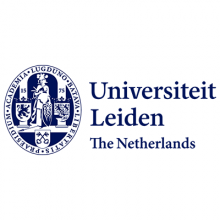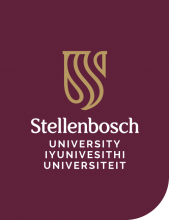Many modern research universities claim to be “innovative” or “entrepreneurial”. But what does that mean? And can we really capture such grand concepts?
Thomson Reuters certainly seems to think so. Starting in 2015, it launched a series of university rankings to put the spotlight on a new breed of “innovative” universities (see related articles below) – more precisely, those research-intensive universities that excel in the industry-oriented segment of their “third mission”. This includes industry-relevant research, knowledge transfer, patenting and technological development.
Over the past few decades, this mission – alongside education and research – has expanded ever more deeply into the business sector.
It’s easy to understand why university managers, or their advisers and marketers, would want to embark on the “entrepreneurial/innovative” branding bandwagon. But clearly it’s not the university as such, as a self-governing organisational entity, that is innovative – it’s the mindset and activities of its professors, PhD students, researchers and lecturers that counts.
Political scientist Donald E Stokes’ book, Pasteur’s Quadrant, was posthumously published in 1997, and he labelled his quadrants – used to classify scientific research projects – with the names of corresponding world-famous researchers such as Pasteur, Bohr and Edison. Characterising universities as “innovative” should also refer to characteristic individual qualities – ranging from intellectual creativity to business acumen.
The 2017 THE Innovation and Impact Summit: registration now open
The Pasteur-type researchers are a particularly interesting bunch from a human resources perspective, being defined by Stokes as both “discovery-oriented” and “use-inspired”. Which universities are likely to have many of these innovative researchers among their ranks?
In our recent research paper, we compared Thomson Reuters’ top 100 ranking with our own ranking system that focuses on what is probably better described as “innovation potential”. We looked at 750 large research-intensive universities and used a slightly different set of performance indicators. We also incorporated a performance indicator that captures Pasteur-type “crossover” research staff: those faculty members or PhD students that are also employed at a business – either part time or temporarily.
Their names can be found on research articles as authors who flag both their academic and corporate affiliate address. They might also be former PhD students, now employed in industry, who still publish, at least for a period, using both their current and former affiliate addresses.
Having many of these industry-orientated individuals on campus is likely, we feel, to be a telltale sign of an innovative university. If so, one would expect to see relatively large shares on these multi-affiliation publications.
We assembled some of our data to put this hypothesis to the test. Focusing on the 35 universities that occur both in Thomson Reuters’ top 100 and our own ranking, we examined their research publication output in 2009-2012. It turns out that their rank position in the top 100 is indeed positively correlated to their quantity of multi-affiliation university-industry co-publications.
Having industry-orientated researchers seems to make a difference – at least according to our first exploration. Overall, there is no single best university, although Stanford University, the Massachusetts Institute of Technology and Harvard University feature very high on both rankings.
Eindhoven University of Technology in the Netherlands is the number one university, among the 35 selected, in terms of industry-oriented researchers, who contribute 6.2 per cent of Eindhoven’s total research publication output. Second and third are Sogang University in South Korea (5.3 per cent) and Delft University of Technology, also in the Netherlands (4.6 per cent).
The top positions of these three are mostly the result of on-campus university spin-off companies, or large research and development-intensive enterprises in the vicinity (Philips’ R&D headquarters is located in Eindhoven, for example).
Further explanations require closer scrutiny of each university’s third-mission profile. Where institutional policies or national legislation might not allow such multiple affiliation arrangements of academic staff at some universities, others may actively promote these practices in order to accelerate knowledge transfer into the business sector or to open up research commercialisation pathways.
But what about the performance of MIT, Stanford and Harvard regarding the output shares of their industry-oriented researchers? They sit at 1.3 per cent, 1.3 per cent and 0.6 per cent, respectively. These are relatively low shares of publications. So, perhaps it’s not about quantity of such researchers at each university, but rather about the research commercialisation qualities of individuals.
This raises an interesting question for university human resources management: how many industry-oriented researchers does a university need to have on its payroll, especially of the “crossover” type, to become truly innovative?
Robert Tijssen is professor of science and innovation studies at Leiden University and a professor at the Centre for Research on Evaluation Science and Technology at Stellenbosch University. He is a co-investigator at the Centre for Global Higher Education, based at UCL Institute of Education.
Alfredo Yegros is a researcher at the Centre for Science and Technology Studies at Leiden University and a research associate at the Centre for Global Higher Education.
Register to continue
Why register?
- Registration is free and only takes a moment
- Once registered, you can read 3 articles a month
- Sign up for our newsletter
Subscribe
Or subscribe for unlimited access to:
- Unlimited access to news, views, insights & reviews
- Digital editions
- Digital access to THE’s university and college rankings analysis
Already registered or a current subscriber? Login












